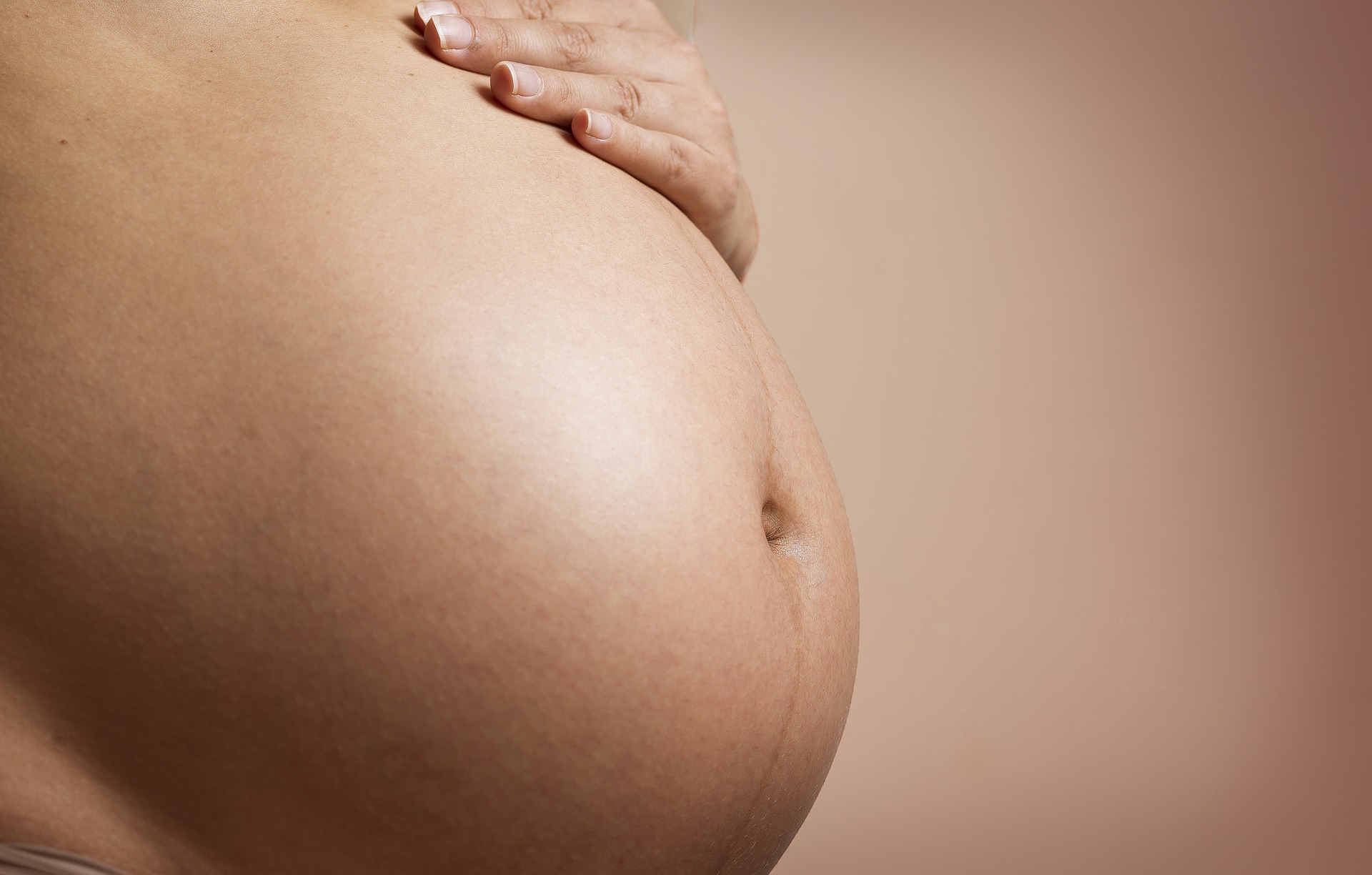 Microbiology
Microbiology
Gut bacteria orchestrate the transmission of overweight from mother to babe
Using gene-sequencing methods to identify infant gut bacteria in a large and representative Canadian birth cohort, we investigated birth mode and infant gut bacterial composition to better understand how maternal overweight during pregnancy could lead to future overweight in newborns.

Women who are overweight during pregnancy often deliver large babies by cesarean section, who have a greater chance of becoming overweight themselves as they grow older. A popular explanation for this mother-infant transmission of overweight is that the mother vaginally transfers "obesogenic" bacteria to her newborn but we do not have strong research evidence for this. In fact, this logical explanation is not supported by what is observed in real life. This is because babies born to overweight women by cesarean section, which should interrupt this transfer of obesogenic bacteria, are at highest risk for future overweight.
Our study had 2 research aims. First, we wanted to apply a statistical method that had never been used before in our research field (microbiome research) - sequential mediation analyses - which, for example, tests whether a child becoming overweight after a mother's overweight during pregnancy, might be due to any particular events that takes place in between the mother's condition and the child gain of weight. Second, using this statistical mediation method, we wanted to find out if the type of gut bacteria found in the infant 3 months after vaginal or cesarean birth was an explanation for the greater chance of child overweight when the mother had been overweight during pregnancy.
This was a study of 935 mother-infant pairs in the Canadian Healthy Infant Longitudinal Development (CHILD) birth cohort. In 3-month old babies, we identified their gut bacteria pool on the basis of bacteria's DNA extracted from infant poop samples. Maternal overweight status during pregnancy was statistically tested for its association with infant gut bacterial composition, which in turn, was tested for an association with the outcome of becoming overweight at age 1 and 3. Once we identified the type of gut bacteria linked to both maternal and child overweight, we conducted a mediation analysis to confirm that the identified gut bacteria, together with the type of birth, "mediated" the mother-child transmission of overweight.
Infants born vaginally to overweight mothers were 3 times more likely to become overweight at age 1, while cesarean-delivered infants of overweight mothers had a 5-fold risk of overweight. The comparison group was composed of babies born vaginally to a normal-weight mother. Hence, a mother's pre-pregnancy weight and how she delivers her baby both elevate risk for overweight in her newborn. The risk is greatest following the cesarean delivery of an overweight woman.
The Lachnospiraceae bacteria were observed to be more abundant in the gut of 3-month old infants born to overweight mothers. Further, this family of bacteria was found to statistically mediate or to be in the "pathway of" the link between maternal pre-pregnancy overweight and childhood overweight. This evidence of mediation was found for vaginal and for cesarean birth.
Several other microbial families were found to be more abundant in infants born to overweight mothers but the Lachnospiraceae were the only gut bacteria that mediated the association with child overweight. Moreover, the type of bacterial species in the Lachnospiraceae family which was found to be higher in infants who became overweight, differed according to vaginal and cesarean birth.
Compared with normal-weight children, the Lachnopsiraceae bacteria were found to have more complex networks with other gut microbiota in overweight children. In experiments with mice conducted by other researchers, these gut bacteria are capable of increasing body fat and even causing diabetes.
Our study potentially explains how maternal overweight during pregnancy increases the risk of her newborn becoming overweight. Together, type of birth and the Lachnospiraceae bacteria in the infant's gut at 3 months of age sequentially mediate the mother-child transmission of overweight, underscoring their importance in causing overweight in children.
Original Article:
H. M. Tun et al., Roles of Birth Mode and Infant Gut Microbiota in Intergenerational Transmission of Overweight and Obesity From Mother to Offspring. JAMA Pediatr 172, 368-377 (2018)Next read: Obesity: The heavyweight of cancer by Daniela Quail , Oakley Olson , Johanna Joyce
Edited by:
Massimo Caine , Founder and Director
We thought you might like
How early-life adversity gets under the skin
May 19, 2016 in Health & Physiology | 3.5 min read by Joanne RyanCOVID-19 during pregnancy causes fetal and placental inflammation
Jul 28, 2022 in Health & Physiology | 3.5 min read by Derek Miller , Valeria Garcia-Flores , Nardhy Gomez-LopezThe colour beige: heating up the fat
Apr 1, 2016 in Health & Physiology | 3.5 min read by Caterina Da RèA new paradigm for metabolic health: reduced intake of dietary branched-chain amino acids
Feb 22, 2018 in Health & Physiology | 3 min read by Dudley W. LammingMore from Microbiology
Monoclonal antibodies that are effective against all COVID-19 -related viruses
Jan 31, 2024 in Microbiology | 3.5 min read by Wan Ni ChiaPlagued for millennia: The complex transmission and ecology of prehistoric Yersinia pestis
Jul 31, 2023 in Microbiology | 3 min read by Aida Andrades Valtueña , Gunnar U. Neumann , Alexander HerbigHow cellular transport can be explained with a flip book
Jun 5, 2023 in Microbiology | 3 min read by Christina ElsnerThe Achilles’ heel of superbugs that survive salty dry conditions
Apr 24, 2023 in Microbiology | 4 min read by Heng Keat TamNew chemistry in unusual bacteria displays drug-like activity
Mar 21, 2023 in Microbiology | 3.5 min read by Grace Dekoker , Joshua BlodgettEditor's picks
Trending now
Popular topics


